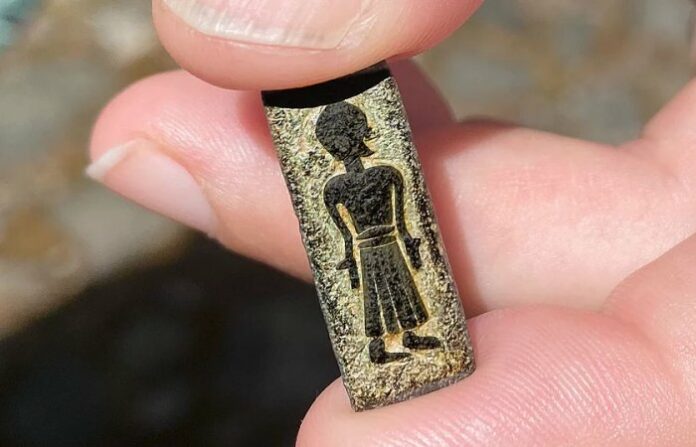In the heart of Falster, located southeast of Denmark, a metal detectorist’s remarkable discovery may rewrite chapters of Danish history. The finding, made by Lennart Larsen on a rainy day, holds significant potential to illuminate the local history of Falster and possibly reveal the site of a former royal power center.
The Discovery
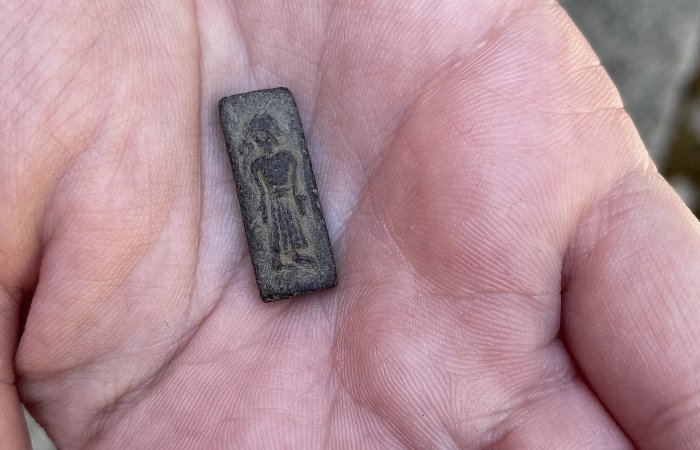
While searching for historical artifacts, Larsen’s equipment emitted a faint beep. Upon investigation, he unearthed small, unique objects that he had never encountered before. Among these was a special stamp known as a “Patrice,” used to create gold images, which were likely offerings to the gods. This two-centimeter-long object might be a vital clue to uncovering the royal past of Falster.
Significance of the Find
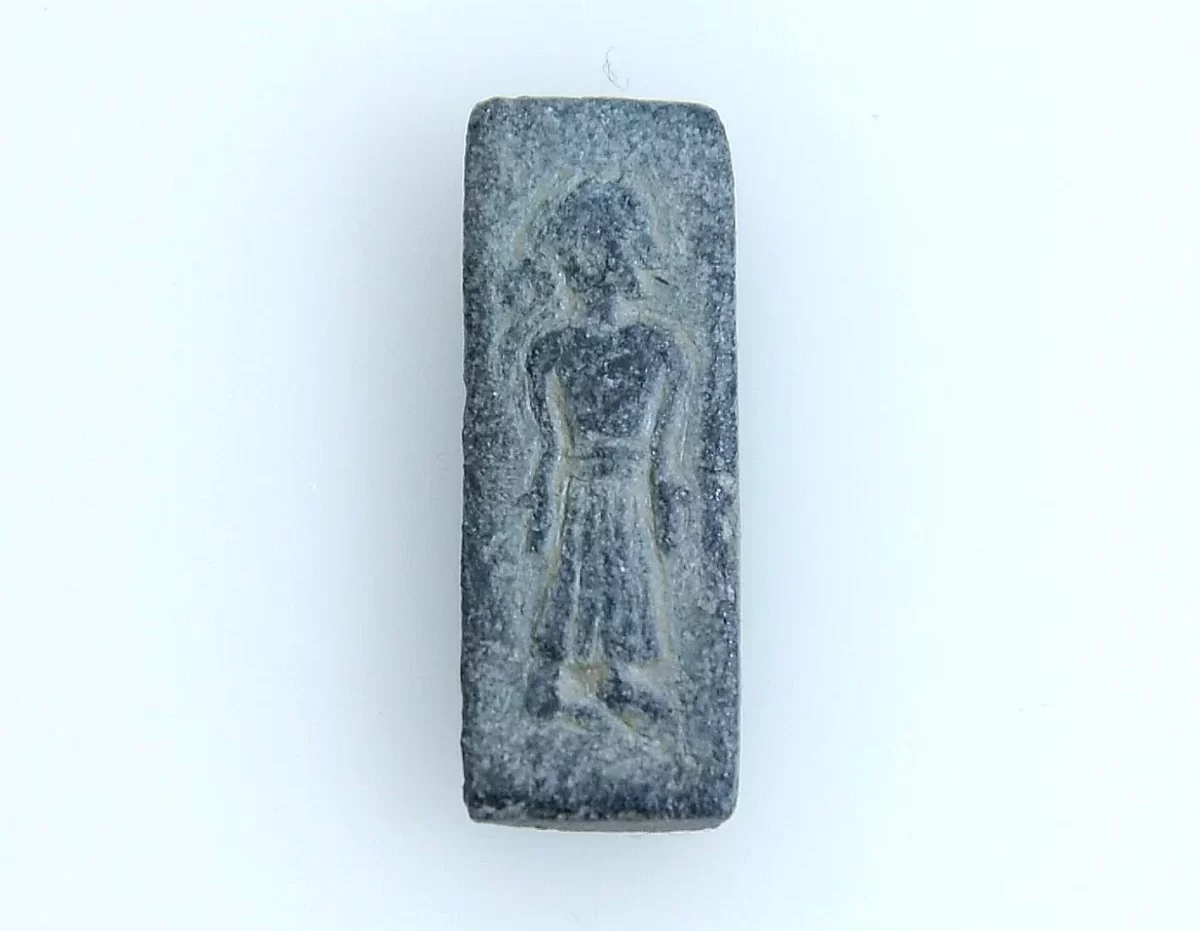
Marie Brinch, an archaeologist and museum inspector from the Museum Lolland-Falster, emphasized the importance of this discovery. She stated, “This indicates that we are standing in a place that has meant some trade and probably also had some form of cultic activity. It could also indicate that it was once a center of power on Falster.” The site’s historical significance is underscored by place names dating back to the Viking Age or earlier and the discovery of marshlands that were used for sacrifices to the gods.
Historical Context
Falster has a rich history, with numerous signs of activity from the Iron Age and Viking Age, including an enormous shipyard and a large Viking Age castle. However, there have been few discoveries that shed light on where the island’s wealthy elite lived before the Viking Age. The recent find could provide crucial insights into this period.
Rarity and Uniqueness of the Stamps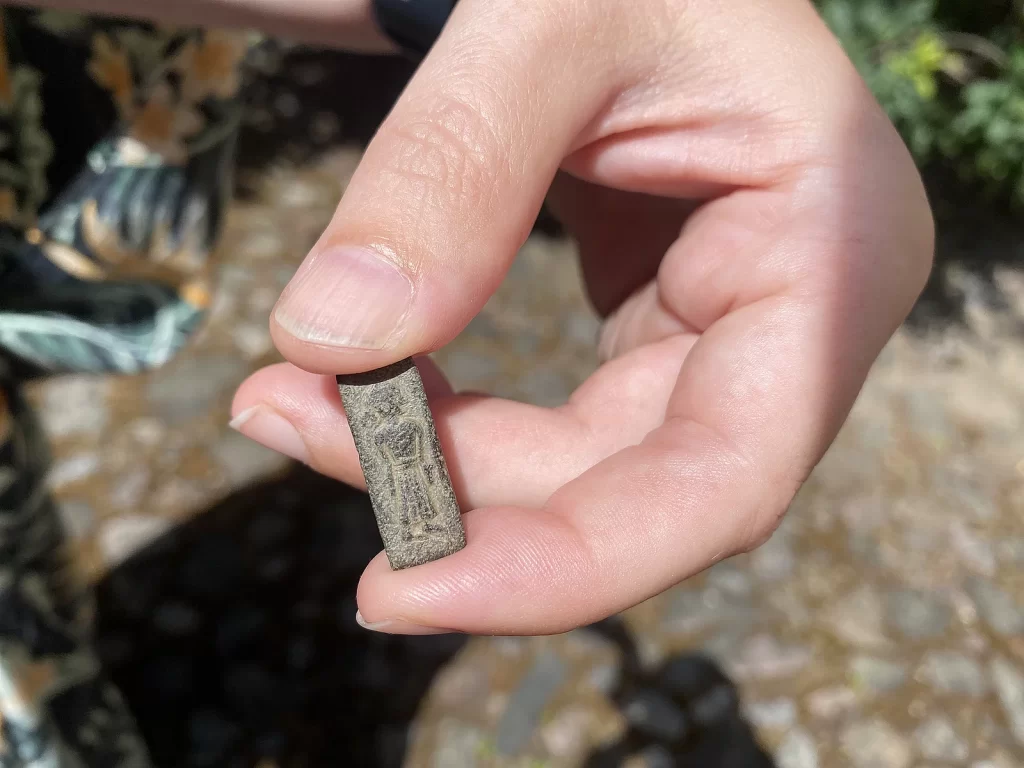
The stamps, created between 500 and 700 AD, are incredibly rare. Margrethe Watt from the National Museum, who specializes in ancient gold coins and stamps, highlighted their rarity. “There have only been 28 stamps discovered in the entire Nordic region, including the one from Falster,” she noted. These stamps are found only in significant places associated with the highest-ranking nobles or kings.
Depiction and Symbolism
The stamp from Falster features a figure in fine clothing with hands positioned in a distinctive manner, palms visible, which could signify submission or revelation. This symbol is present in both Christian and pre-Christian cultures and is still seen in many churches today. The depiction on the stamp could represent a royal figure submitting to a god or a god revealing themselves to a human.
Further Investigations
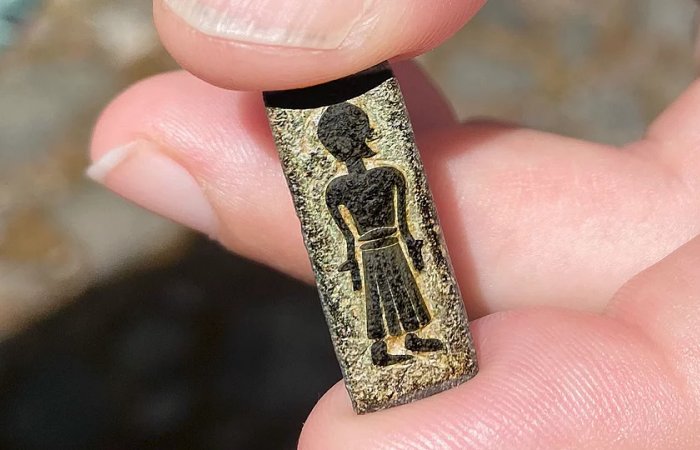
Determining whether the figure is male or female hinges on further examination, specifically looking for a tuft of hair on the back of the stamp. The Museum Lolland-Falster is continuing its investigation and has not yet disclosed the exact location of the find, though it confirms it was made in central Falster.
Conclusion
The discovery of the ancient stamps in Falster is a significant archaeological find that could provide new insights into the island’s historical significance and its possible role as a center of royal power. As further investigations continue, this remarkable find may help unravel more secrets about Denmark’s rich and complex history.
